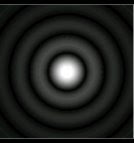"Scientists look inside. Backwards. And then they look deep. They ask questions based on what they see, and look again. It's a perspective that combines scrutiny with humility, specificity with open-mindedness — factors not altogether mysterious to designers."
"As a visual maker, to spend any time at all with scientists is to become at once profoundly aware of our similarities and devastated by that which divides us. In an age that is likely to be remembered for its self-absorption, it is an extraordinary thing to witness a lab filled with people devoting themselves passionately to understanding what DNA looks like, or how the immune system behaves, or what infection means for a human being fighting for her life. It's radical. It's humbling. And if we don't begin actively seeking new opportunities to learn, collaborate and contribute to this critical community of thinkers and doers, then we may have good reason to revisit that psychosis study."
from Jessica Helfand's article,
Science and Design, the Next Wave, at
designobserver.







